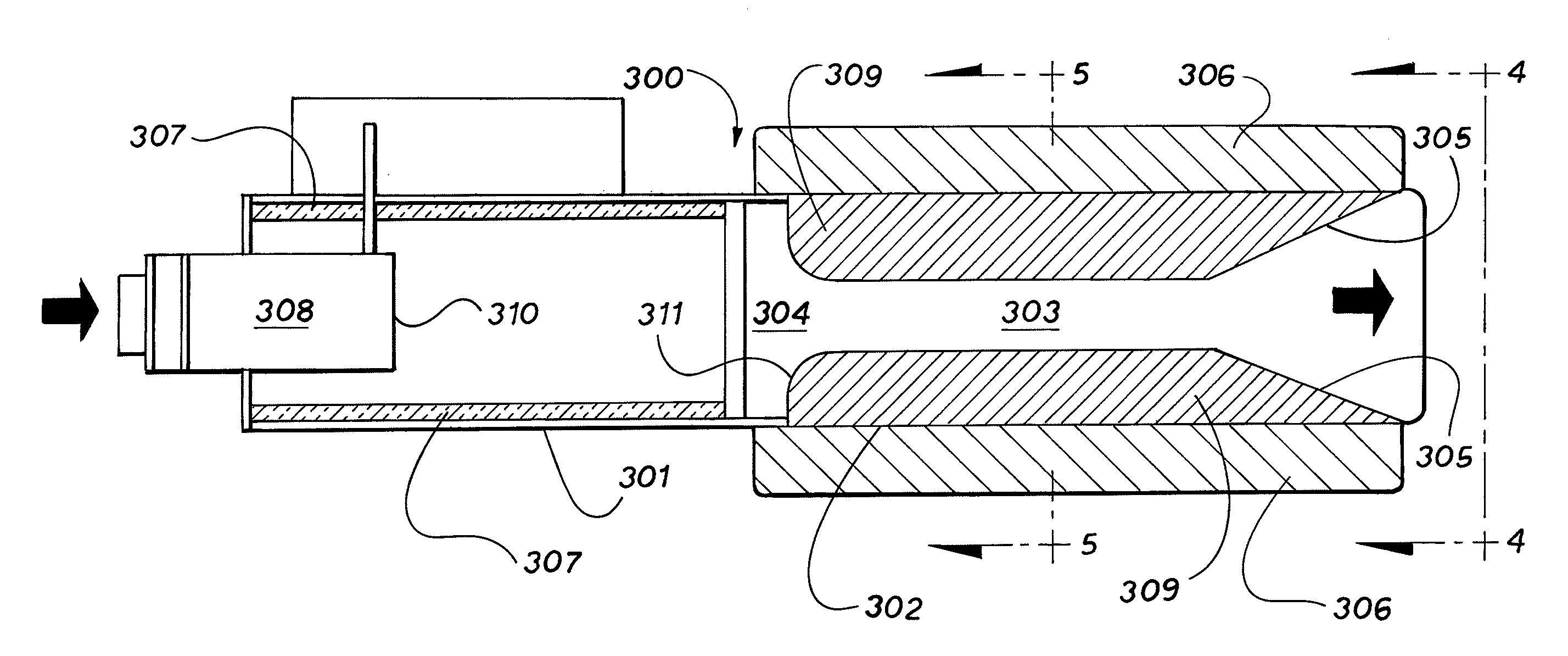Single Duct Silencing Terminal Unit
a terminal unit and single duct technology, applied in the direction of ducting arrangement, lighting and heating apparatus, heating types, etc., can solve the problems of affecting the noise level generated, affecting the turbulence and air pressure created inside the ductwork, and specifications that do not take into account the system effects produced, etc., to achieve the effect of minimizing turbulence, reducing turbulence, and superior attenuation properties
- Summary
- Abstract
- Description
- Claims
- Application Information
AI Technical Summary
Benefits of technology
Problems solved by technology
Method used
Image
Examples
Embodiment Construction
[0021]FIG. 1 is an illustration of the close-coupling of a prior art SDTU 101 with a prior art silencer 102. Such close-coupling of prior art SDTUs and silencers will produce unpredictable results because of the turbulence created when high velocity air exits the inlet duct 103 and enters the silencer 102. The wide area 104 created where the silencer 102 attaches to the SDTU 101 will create excess turbulence and noise. In addition, the cross-sectional area of the air pathway 105 of a prior art silencer 102 is typically narrower than the cross sectional area of the outlet 106 of the SDTU 101. Therefore a “nose”107 is created where the air exiting the outlet 106 collides into the baffles 108 inside the silencer 103. This too causes added turbulence and increased noise. Such noise greatly exceeds that which would be predicted based on the manufacturer's noise specifications for the SDTU 101 and silencer 102 individually.
[0022]FIG. 2 is an illustration of how prior art silencers are typ...
PUM
 Login to View More
Login to View More Abstract
Description
Claims
Application Information
 Login to View More
Login to View More - R&D
- Intellectual Property
- Life Sciences
- Materials
- Tech Scout
- Unparalleled Data Quality
- Higher Quality Content
- 60% Fewer Hallucinations
Browse by: Latest US Patents, China's latest patents, Technical Efficacy Thesaurus, Application Domain, Technology Topic, Popular Technical Reports.
© 2025 PatSnap. All rights reserved.Legal|Privacy policy|Modern Slavery Act Transparency Statement|Sitemap|About US| Contact US: help@patsnap.com



